health
Type of resources
Topics
INSPIRE themes
Provided by
Years
Formats
Representation types
Update frequencies
status
-

UNO is a underwater images dataset allowing deep-learning networks to localize non-natural objects within underwater images. The dataset consists in 279 videos, 5930 frames, and 10809 labels. UNO is a more consistent and balanced version of the TrashCan image dataset to evaluate models for detecting non-natural objects in the underwater environment. We propose a method to balance the number of annotations and images for cross-evaluation. We then compare the performance of a SOTA object detection model when using TrashCAN and UNO datasets. Additionally, we assess covariate shift by testing the model on an image dataset for real-world application. Experimental results show significantly better and more consistent performance using the UNO dataset.
-
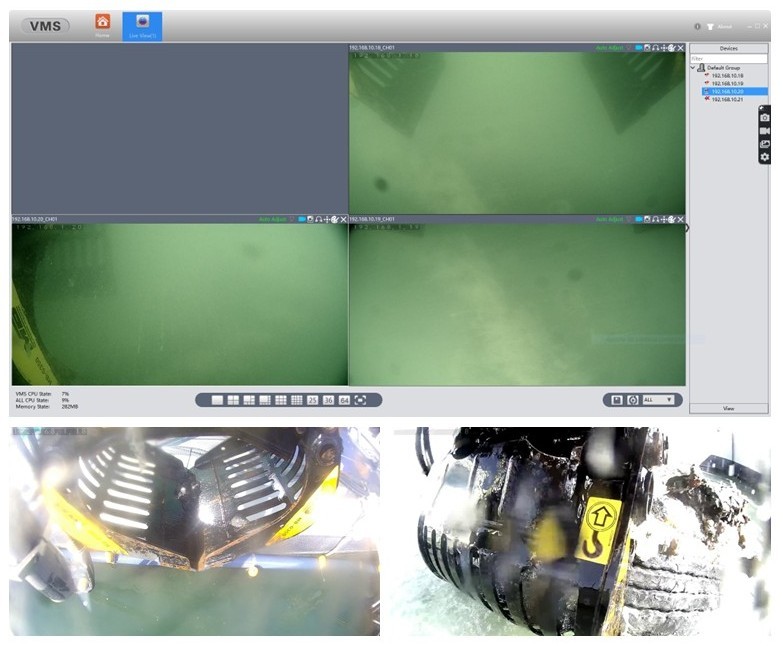
The robotic seabed cleaning platform developed by TECNALIA, CNRS- LIRMM and “Servizi Tecnici”, consists in a floating platform which, through cables and winches, the seabed cleaning robot is attached. The structure is equipped with a set of sensors for underwater perception to control the robot and detect & identify the marine litter to be removed. Moreover, the robotic platform is characterized by two different tools that allow to collect the ML on the seabed: a drudge to suck up smaller litter and a gripper to grasps larger items like tires, parts of boats, fishing nets etc.
-
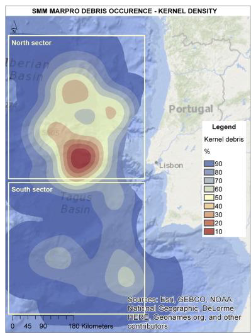
The MAELSTROM Project performed a literature survey includes existing databases on marine litter data on the water column, sea floor, estuaries, rivers and beaches. Specifically, the European/Regional Seas review is based on existing publications while the study areas review is based on existing publications and raw data, when available. The review intends to provide the knowledge-base on the characteristics, sources and pathways of marine litter in the two demo sites of the lagoon of Venice (Italy) and the Ave River estuary (Portugal). Specifically, the review aims at: ● improving the understanding of the amounts and types of marine litter occurring in Europe and in particular in the study areas; ● improving the understanding of the main sources and pathways of marine litter in Europe and in particular in the study areas; ● supporting the definition of the input data and assumptions related to marine litter to be used in numerical models of marine litter spatial distribution. To achieve this objective, we assume the following constraints: ● the main focus is on macro-litter; ● the review has a geographic scope focused on the study sites; ● marine litter literature has been analysed to indicate the most probable sources and amount. Here the results related to the NW Portuguese coastal area. For more details, see the project deliverable: Ghezzo, M., MOSCHINO, V., Galvez, D., Mira Veiga, J., Bocci, M., Iglesias, I., Vieira, L., Sousa Pinto, I., Antunes, S. C., & Correia, A. M. (2021). D2.1 Report on the characterization of major sources of marine litter and macro-plastic in the demo sites. MAELSTROM Project. https://doi.org/10.5281/zenodo.14920205
-

One of the aim of the MAELSTROM project was to provide a new set of integrated and advanced solutions to identify the typology of marine litter and foremost its traceability from the collection to the treatment phase through innovative app and portal. The Project developed a software and hardware tracking platform for ML data mining and sharing to narrate the in-field organization and testing of marine litter tracking, monitoring and clean up activities. The campaign conducted by Venice Lagoon Plastic Free (VLPF) of marine litter monitoring in the lagoon of Venice in Italy was devised to provide guidance and the feedback required to instruct the technical team's work involved in framing, developing, and fine-tuning the marine litter monitoring service within the MAELSTROM app. The dataset represents the results of four beach litter surveys conducted in the area of the Venice Lagoon in 2021. Data report the number of items identified on the beaches in a 100 m long transect along the beach length. The typology of items is identified using the “G code”, as per the Guidelines and forms for gathering marine litter data: beach and seafloor trawling (Galgani et al., 2021). For more information about the survey see the project deliverable 6.1.
-
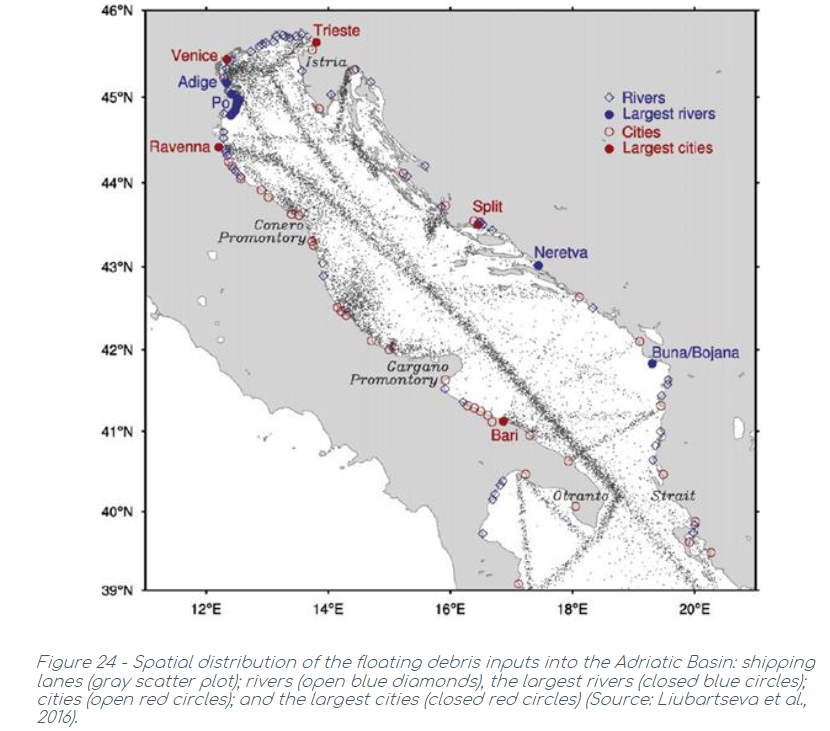
The MAELSTROM Project performed a literature survey includes existing databases on marine litter data on the water column, sea floor, estuaries, rivers and beaches. Specifically, the European/Regional Seas review is based on existing publications while the study areas review is based on existing publications and raw data, when available. The review intends to provide the knowledge-base on the characteristics, sources and pathways of marine litter in the two demo sites of the lagoon of Venice (Italy) and the Ave River estuary (Portugal). Specifically, the review aims at: ● improving the understanding of the amounts and types of marine litter occurring in Europe and in particular in the study areas; ● improving the understanding of the main sources and pathways of marine litter in Europe and in particular in the study areas; ● supporting the definition of the input data and assumptions related to marine litter to be used in numerical models of marine litter spatial distribution. To achieve this objective, we assume the following constraints: ● the main focus is on macro-litter; ● the review has a geographic scope focused on the study sites; ● marine litter literature has been analysed to indicate the most probable sources and amount. Here the results related to the Adriatic Sea subregion that is characterised by the presence of many sources of marine litter, including large rivers, big coastal cities, touristic facilities, heavy shipping traffic, intense commercial fisheries and mussel farming. For more details, see the project deliverable: Ghezzo, M., MOSCHINO, V., Galvez, D., Mira Veiga, J., Bocci, M., Iglesias, I., Vieira, L., Sousa Pinto, I., Antunes, S. C., & Correia, A. M. (2021). D2.1 Report on the characterization of major sources of marine litter and macro-plastic in the demo sites. MAELSTROM Project. https://doi.org/10.5281/zenodo.14920205
-
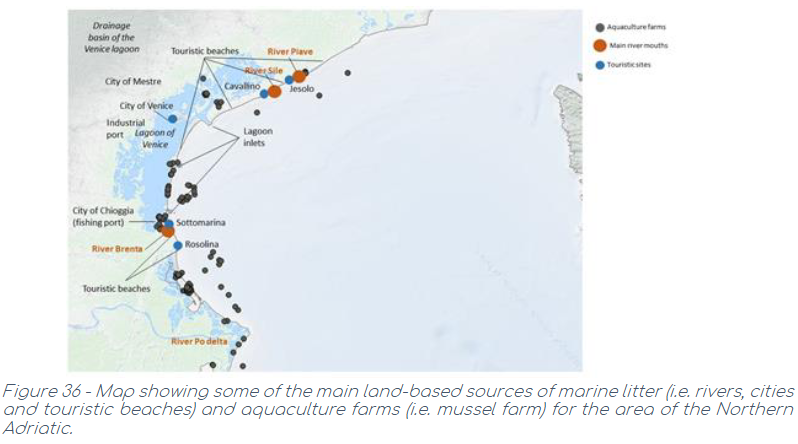
The MAELSTROM Project performed a literature survey includes existing databases on marine litter data on the water column, sea floor, estuaries, rivers and beaches. Specifically, the European/Regional Seas review is based on existing publications while the study areas review is based on existing publications and raw data, when available. The review intends to provide the knowledge-base on the characteristics, sources and pathways of marine litter in the two demo sites of the lagoon of Venice (Italy) and the Ave River estuary (Portugal). Specifically, the review aims at: ● improving the understanding of the amounts and types of marine litter occurring in Europe and in particular in the study areas; ● improving the understanding of the main sources and pathways of marine litter in Europe and in particular in the study areas; ● supporting the definition of the input data and assumptions related to marine litter to be used in numerical models of marine litter spatial distribution. To achieve this objective, we assume the following constraints: ● the main focus is on macro-litter; ● the review has a geographic scope focused on the study sites; ● marine litter literature has been analysed to indicate the most probable sources and amount. Here the results related to the Venice lagoon and Venetian coastal area (demonstration site). For more details, see the project deliverable: Ghezzo, M., MOSCHINO, V., Galvez, D., Mira Veiga, J., Bocci, M., Iglesias, I., Vieira, L., Sousa Pinto, I., Antunes, S. C., & Correia, A. M. (2021). D2.1 Report on the characterization of major sources of marine litter and macro-plastic in the demo sites. MAELSTROM Project. https://doi.org/10.5281/zenodo.14920205
-
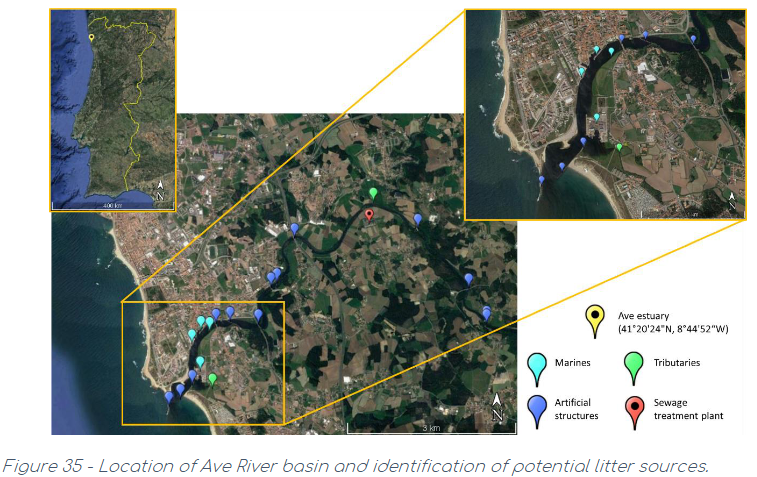
The MAELSTROM Project performed a literature survey includes existing databases on marine litter data on the water column, sea floor, estuaries, rivers and beaches. Specifically, the European/Regional Seas review is based on existing publications while the study areas review is based on existing publications and raw data, when available. The review intends to provide the knowledge-base on the characteristics, sources and pathways of marine litter in the two demo sites of the lagoon of Venice (Italy) and the Ave River estuary (Portugal). Specifically, the review aims at: ● improving the understanding of the amounts and types of marine litter occurring in Europe and in particular in the study areas; ● improving the understanding of the main sources and pathways of marine litter in Europe and in particular in the study areas; ● supporting the definition of the input data and assumptions related to marine litter to be used in numerical models of marine litter spatial distribution. To achieve this objective, we assume the following constraints: ● the main focus is on macro-litter; ● the review has a geographic scope focused on the study sites; ● marine litter literature has been analysed to indicate the most probable sources and amount. Here the results related to the Ave estuary Portuguese demonstration site. For more details, see the project deliverable: Ghezzo, M., MOSCHINO, V., Galvez, D., Mira Veiga, J., Bocci, M., Iglesias, I., Vieira, L., Sousa Pinto, I., Antunes, S. C., & Correia, A. M. (2021). D2.1 Report on the characterization of major sources of marine litter and macro-plastic in the demo sites. MAELSTROM Project. https://doi.org/10.5281/zenodo.14920205
-
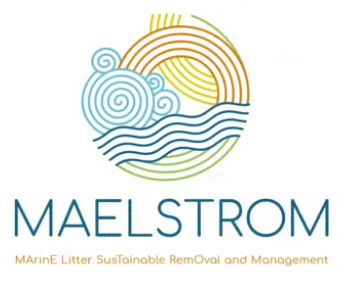
New solutions for the recovery of marine plastics and litter: The global marine plastic litter challenge comprises an estimated stock of 83 million tonnes of plastic waste accumulated in oceans. The recovery of plastic materials already in the ocean is an arduous and costly task. This is why innovations are urgently needed. The EU-funded MAELSTROM project is bringing together key stakeholders – from research centres and recycling companies to marine scientists and robotic experts – to leverage the integration of complementary technologies for the sustainable removal of marine litter in different European coastal ecosystems. The project will design, manufacture and integrate scalable, replicable and automated technologies, co-powered with renewable energy and second-generation fuel, to identify, remove, sort and recycle all types of collected marine litter into valuable raw materials. Objective: MAELSTROM strives to provide answers and diversified solutions to the complex question to the removal and sustainable treatment of marine litter legacy. MAELSTROM leverages on the integration of complementary technologies for marine litter removal in different European coastal ecosystems, compounded with full-fledged circular economy and societal oriented solutions. In particular, the project (i) sets out a reliable multidisciplinary and scientifically sound approach for the assessment of marine debris distribution and impact on marine life in highly valuable ecosystems and protected areas; (ii) designs and manufactures scalable, replicable and automated technologies, co-powered with renewable energy and second generation fuel, to identify, remove and sort marine litter; (iii) evaluates over time the effectiveness of marine litter removal devices along with their impact on local ecosystems; (iv) integrates different technologies to track, sort and recycle all types of collected marine litter into valuable raw materials for future marketisation; (v) assesses the economic and societal impact of the MAELSTROM solutions providing also a comprehensive life-cycle assessment of the technologies and products; (vi) enhances social awareness about the marine litter issue and engages citizens and stakeholders in MAELSTROM activities; (vii) interplays with similar projects to maximize innovation uptake for marine litter removal within and outside the EU. MAELSTROM is formally supported by a set of key stakeholders committed to sustain its core actions and its follow up activities. The consortium is a tight knit group made of research centers and foundations of excellence in marine life, biology and sustainable energy, AI and robotics, multinational /national recycling companies with certified industrial plants, a market consultancy company, a micro-enterprise and a plastic-focussed NGO.
-
The bathymetry was acquired in 2013 in the Grand Canal (Venice) as part of the RITMARE (La Ricerca ITaliana per il MARE) research project. The data were collected using a Kongsberg EM-2040 dual-head multibeam system operating at 360 kHz, mounted on the CNR Litus vessel, and subsequently processed with Kongsberg SIS software. The information acquired was integrated with sound velocity profiles and georeferenced using the Seapath 300 positioning system. This survey will serve as a basis for comparison with data collected ten years later, in 2023, in order to assess any morphological and sedimentological changes in the bottom of the Grand Canal.
-

As part of the European MAELSTROM project, passive acoustic monitoring (PAM) was conducted using a hydrophone deployed before and after the cleaning campaign carried out with a robotic platform at the Mussel Farm site. The primary aim of this acoustic monitoring was to analyze underwater soundscapes to detect the presence of soniferous organisms, with particular attention to fish and potentially invertebrate components.
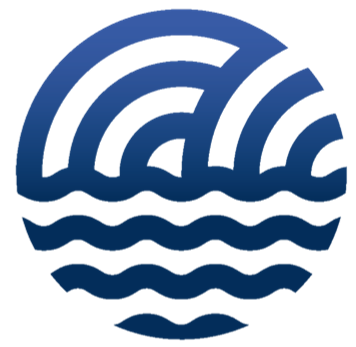 CNR-ISMAR
CNR-ISMAR